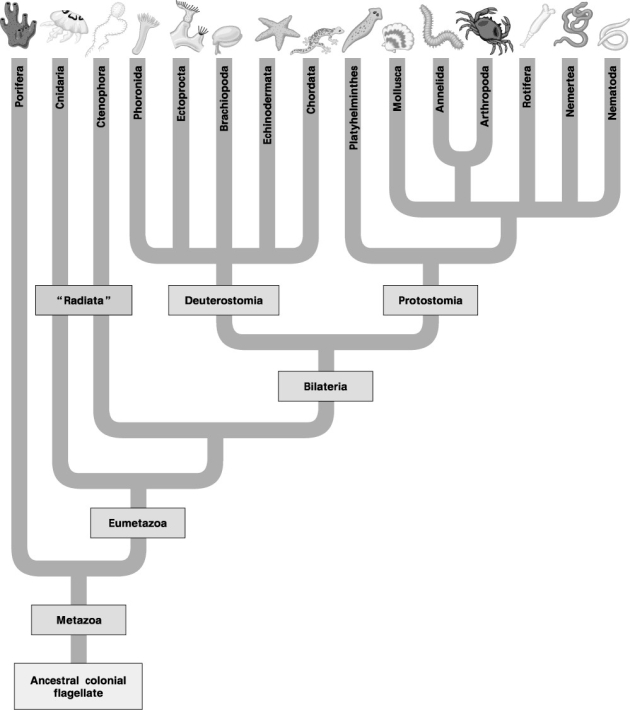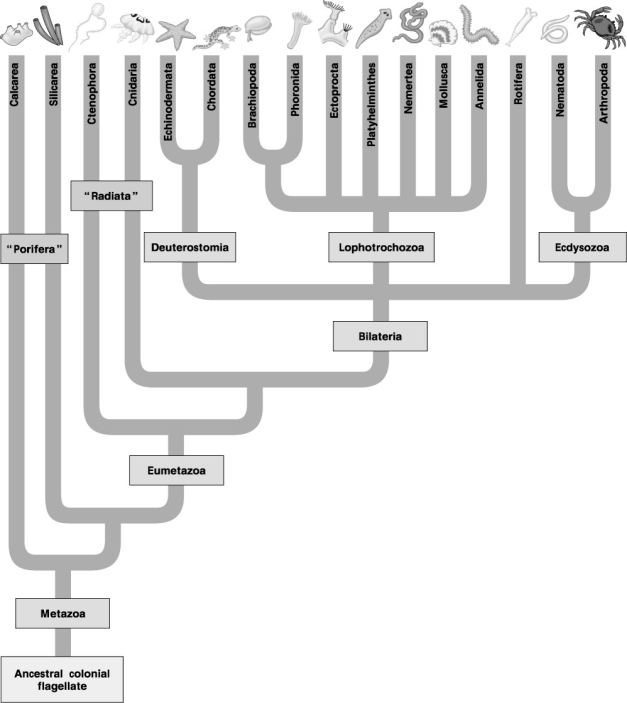Multiple Choice
The following eight questions refer to Figure 32.2A (morphological) and Figure 32.2B (molecular) phylogenetic trees of the animal kingdom.

Figure 32.2A: Morphological Phylogeny

Figure 32.2B: Molecular Phylogeny
-In the traditional phylogeny (Fig. 32.2A) , the sponges are considered to be a clade, whereas in the molecular phylogeny (Fig. 32.2B) , sponges
A) do not all have a common ancestor that is unique only to them.
B) are polyphyletic.
C) called the Calcarea should actually be included among the eumetazoa.
D) called the Silicea are the sole organisms that should be properly called "sponges."
E) called the Calcarea diverged from the lineage that eventually produced the eumetazoa earlier than did the Silicea.
Correct Answer:

Verified
Correct Answer:
Verified
Q15: <img src="https://d2lvgg3v3hfg70.cloudfront.net/TB2680/.jpg" alt=" Figure 32.1
Q16: Cephalization is primarily associated with<br>A)adaptation to dark
Q17: Organisms showing radial symmetry would likely<br>A)be good
Q18: Which of the following is (are)unique to
Q19: You have before you a living organism,
Q21: A researcher is trying to construct a
Q22: <img src="https://d2lvgg3v3hfg70.cloudfront.net/TB2680/.jpg" alt=" Figure 32.1
Q23: Which of the following terms or structures
Q24: The number of legs an insect has,
Q25: Table 32.1. Proposed Number of Hox Genes